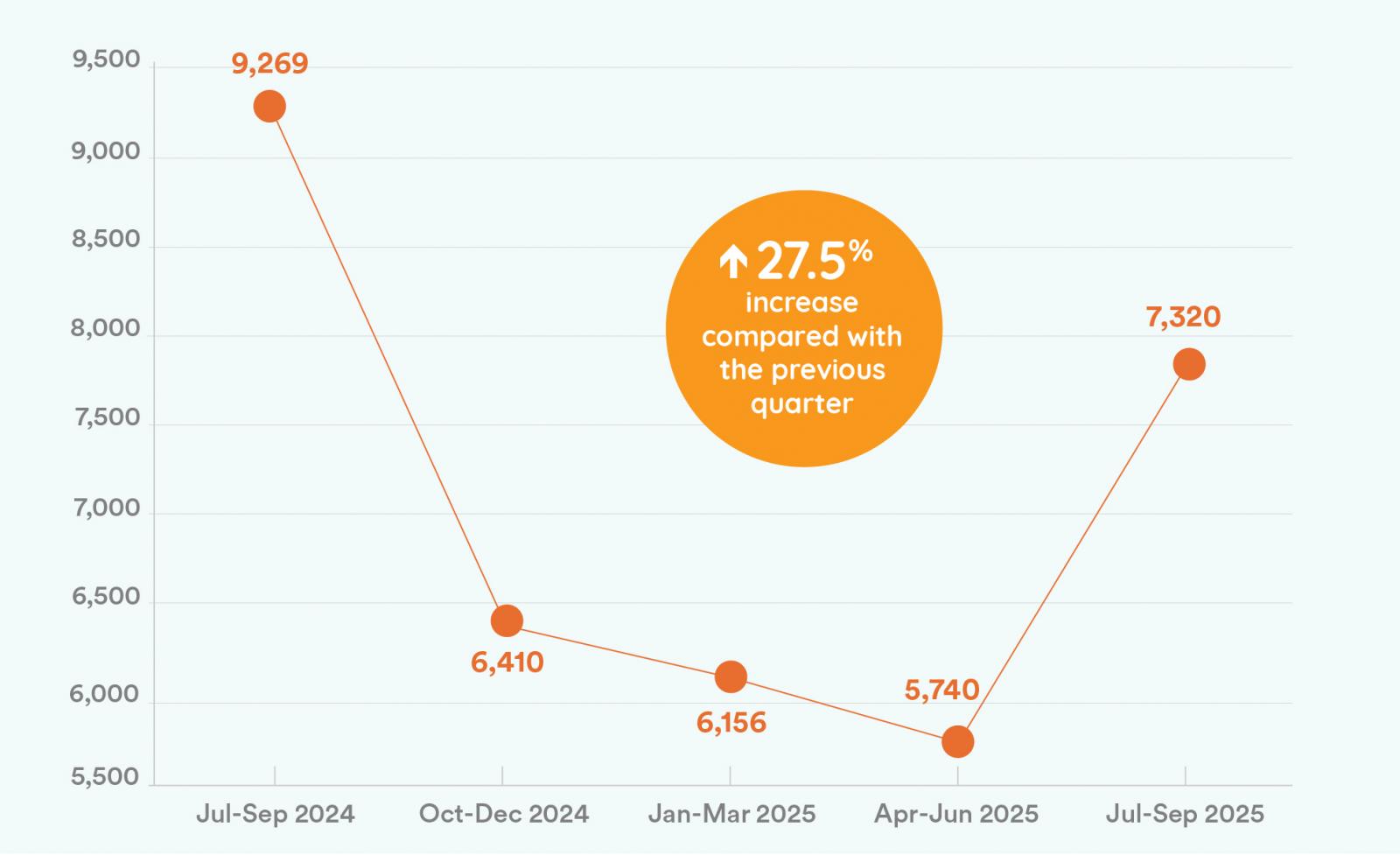A small fraction of complaints to EWON are from small business. We received 327 complaints this quarter out of 7,320 and only 1,322 out of 27,588 for the last financial year. We are working to create greater awareness of EWON across the small business sector.
Consumer protections for small business energy customers
In our November 2021 report, Spotlight On : Consumer and small business energy debt solutions, EWON called for retailers and government to implement processes or regulations to ensure equitable protections for small business customers.
Now, in November 2025, there has been little headway in closing these gaps:
-
In May 2023, we saw the Australian Market Energy Commission (AEMC) introduce new rules which placed obligations on energy retailers to support small business customers impacted by family violence. Despite this, there has been no other regulatory reforms in the energy space.
-
While some retailers offer payment arrangements, small business customers do not have strong negotiation positions when requesting an affordable payment arrangement or time periods to pay their bills.
EWON continues to call for retailers and government to implement processes or regulations to ensure equitable protections which in turn would work towards increased trust in the sector and reduce complaints from small business customers.
Case studies
The following case studies feature a small business affected by family violence, one disconnected in error, an another attempting to leave an embedded network to take up a market offer. These examples show the commonality of small business and residential complaints, which further supports our argument that both classes of customer should enjoy similar consumer protections.
Case study one
 Café owner impacted by family violence and debt
Café owner impacted by family violence and debt
Meg ran a café and had accumulated nine months of debt on her electricity and gas accounts. She was on a payment plan but had now received disconnection notices and a lump sum to pay.
She was unable to resolve the issue with her retailer, couldn’t afford the lump sum and was experiencing family violence. Meg’s partner monitored her emails, and she was worried about the impact the situation would have on her home life. An advocate contacted EWON on her behalf.
EWON contacted Meg’s retailer who confirmed the business was not at risk of disconnection but had an outstanding balance of over $3,700 for electricity and $1,400 for gas. The retailer confirmed the accounts were flagged as being impacted by family violence and noted that the customer had two other accounts in her name at the property. The retailer asked EWON to confirm if the customer was aware of the additional accounts and if she had a preferred and safe contact method.
The advocate confirmed that Meg didn’t have a preferred method of communication but was aware of the additional accounts. They also noted that when an issue had occurred on those accounts, the retailer had contacted her partner, and they were concerned this would happen again.
The retailer offered Meg a payment plan for up to six months but required a safe contact method. Meg provided a new email address and the retailer established a payment arrangement for $192 per week for her electricity account and $33 per week for her gas account.
Case study two
 Pizzeria disconnected despite direct debit
Pizzeria disconnected despite direct debit
Nick opened an electricity account for his pizza shop in November 2024 and set up a direct debit but never received a bill. The property was disconnected in January 2025. He contacted EWON after the local distributor was left a notice at his business address.
We contacted the retailer and local distributor. The retailer hadn’t disconnected the supply and said his account was in credit due to Energy Bill Relief payments. The distributor also said it hadn’t disconnected supply at Nick’s address but had disconnected supply of the neighbouring shop. The distributor reconnected the supply at the neighbouring shop and the power was restored to both properties.
The distributor said there appeared to be common power supply across both businesses. Because this issue occurred internally within the properties, we confirmed that Nick was responsible for obtaining an accredited service provider to inspect the wiring. However, Nick advised that this would be complicated because he rented the property. We advised that business loss, spoilt food and reimbursement of electrician’s fees would also need to be discussed with the landlord. Nick accepted the outcome and said he would contact the landlord.

Case study three
 Retail shop owner leaves embedded network
Retail shop owner leaves embedded network
In April 2024 Rachel arranged to transfer her shop, located within a shopping centre, to her preferred electricity retailer, Retailer B. In May 2024, she disputed a bill from the original provider, Retailer A, and was incorrectly told that because Retailer A supplied the whole shopping centre, she couldn’t switch, even though she had managed to do so. The customer paid the invoices from Retailer A and also continued to receive and pay invoices from Retailer B.
Rachel was later advised by Retailer A that it would refund over $45,000. Three months later, she still hadn’t received the refund and needed the money to pay Retailer B.
EWON contacted Retailer A who said the customer had transferred to a different provider but it was waiting for Rachel’s details to refund the money. They said they had issued the customer with six bills for network charges which would be deducted from the credit on the account.
We asked for the refund to be escalated, and Rachel was refunded $40,000. We advised her that she would continue to receive bills from Retailer A for supply charges, which cover the cost of maintaining the network, but would also receive bills for usage charges from her Retailer B.






